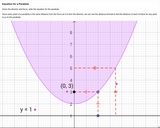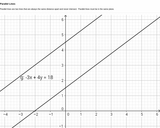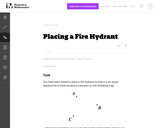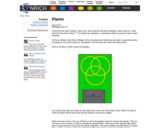
This Nrich question tackles proportion in a real context. It also needs systematic thinking to sort out the information and take a step-by-step route to the solution.
- Subject:
- Mathematics
- Material Type:
- Activity/Lab
- Date Added:
- 06/17/2021

This Nrich question tackles proportion in a real context. It also needs systematic thinking to sort out the information and take a step-by-step route to the solution.

This challenging problem and brainteaser gives students an opportunity to compose and decompose polygons to make rectangles.

This short video and interactive assessment activity is designed to give fourth graders an overview of ellipses, trapezoids, rhombi, and polygons.

This short video and interactive assessment activity is designed to give fifth graders an overview of forming figures with cutouts.

The purpose of this task is to provide students an opportunity to use mathematics addressed in different standards in the same problem.

This high level task is an example of applying geometric methods to solve design problems and satisfy physical constraints. This task is accessible to all students. In this task, a typographic grid system serves as the background for a standard paper clip.

This Nrich activity offers free exploration that can help youngsters with their development of the concepts associated with fractions. It provides a chance for meaningful mathematical discussion and sharing of current understanding, in addition to offering opportunities for challenging misconceptions.

Image of parabola on coordinate plane, with hot spots indicating focus and directrix, along with an example of deriving the equation for a parabola given the focus and directrix.

Image of parallel lines, image of perpendicular lines, and image of intersecting lines, each image followed by text in accordion of properties of eac.n

Students act as civil engineers developing safe railways as a way to strengthen their understanding of parallel and intersecting lines. Using pieces of yarn to visually represent line segments, students lay down "train tracks" on a carpeted floor, and make guesses as to whether these segments are arranged in parallel or non-parallel fashion. Students then test their tracks by running two LEGO® MINDSTORMS® NXT robots to observe the consequences of their track designs, and make safety improvements. Robots on intersecting courses face imminent collision, while robots on parallel courses travel safely.

This short video and interactive assessment activity is designed to teach third graders about fraction of a whole.

This lesson has four different activities where students practice identifying the characteristics of two-dimensional shapes by using pattern blocks. These practice activities should be used to supplement a mathematics curriculum, not be the lessons alone to teach shape identification. They can also be used as a math intervention, center time, or sent home. Attached to the lesson is a print out of paper pattern blocks if actual blocks are not available. Also attached is an activity page for counting and identifying shapes.

This Nrich problem is in three parts, with each part becoming more open-ended and requiring more reasoning, giving students a chance to develop their skills at solving problems with fractions and then applying those skills in a more challenging context. By listening to others' approaches, students will be encouraged to persevere and continue to improve on their solution to the final part of the problem.

In this Nrich problem students apply their knowledge of area and percentages to extend their understanding.

The objective of this lesson is to illustrate how a common everyday experience (such as playing pool) can often provide a learning moment. In the example chosen, we use the game of pool to help explain some key concepts of physics. One of these concepts is the conservation of linear momentum since conservation laws play an extremely important role in many aspects of physics. The idea that a certain property of a system is maintained before and after something happens is quite central to many principles in physics and in the pool example, we concentrate on the conservation of linear momentum. The latter half of the video looks at angular momentum and friction, examining why certain objects roll, as opposed to slide. We do this by looking at how striking a ball with a cue stick at different locations produces different effects.

The objective of this lesson is to illustrate how a common everyday experience (such as playing pool) can often provide a learning moment. In the example chosen, we use the game of pool to help explain some key concepts of physics. One of these concepts is the conservation of linear momentum since conservation laws play an extremely important role in many aspects of physics. The idea that a certain property of a system is maintained before and after something happens is quite central to many principles in physics and in the pool example, we concentrate on the conservation of linear momentum. The latter half of the video looks at angular momentum and friction, examining why certain objects roll, as opposed to slide. We do this by looking at how striking a ball with a cue stick at different locations produces different effects.

This Nrich problem is a good challenge for those children who are competent with calculating using fractions and decimals.

In this Nrich problem students extend their understanding of percentages in a multi-step real world situation.

This task can be implemented in a variety of ways. For a class with previous exposure to properties of perpendicular bisectors, part (a) could be a quick exercise in geometric constructions, and an application of the result. Alternatively, this could be part of an introduction to perpendicular bisectors, culminating in a full proof that the three perpendicular bisectors are concurrent at the circumcenter of the triangle, an essentially complete proof of which is found in the solution below.

In this Nrich activity, students explore combinations in a situation with constraints. The combinations are complicated by sets and subsets. The situation uses a Venn Diagram.